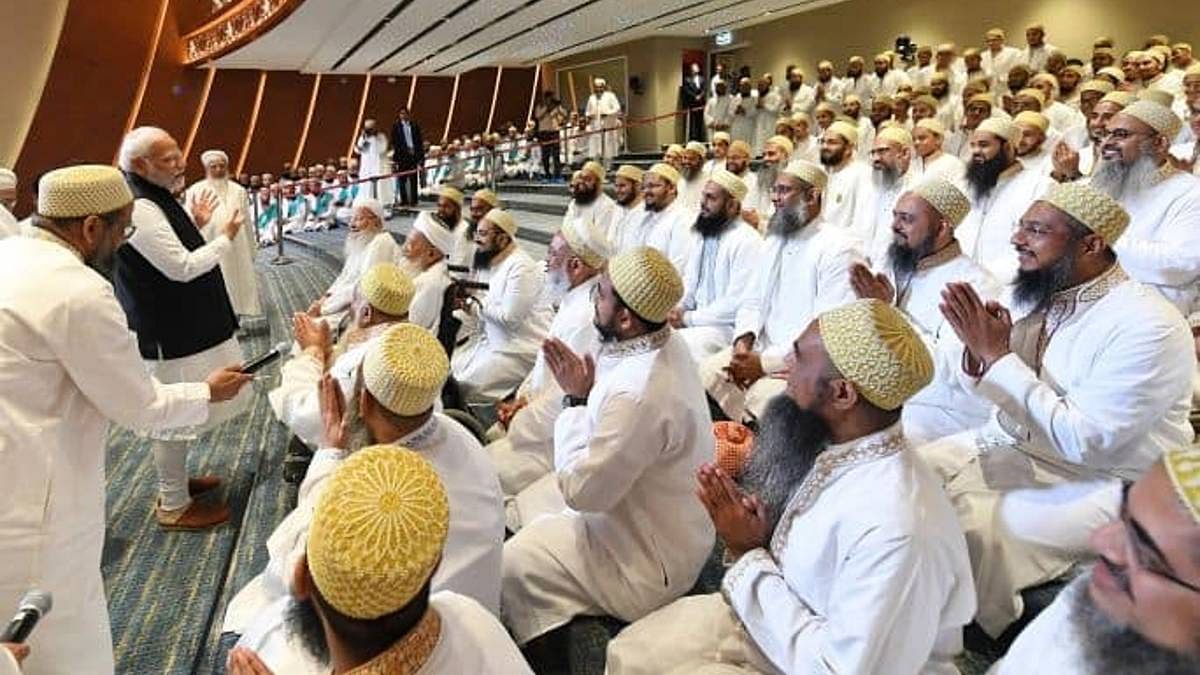Abbas being the face of the BJPâs Lok Sabha campaign among Muslims is significantly different from the partyâs traditional outreach to the community, especially the Shias, who have, at least since the late 1990s, been perceived to be inclined towards the BJP.
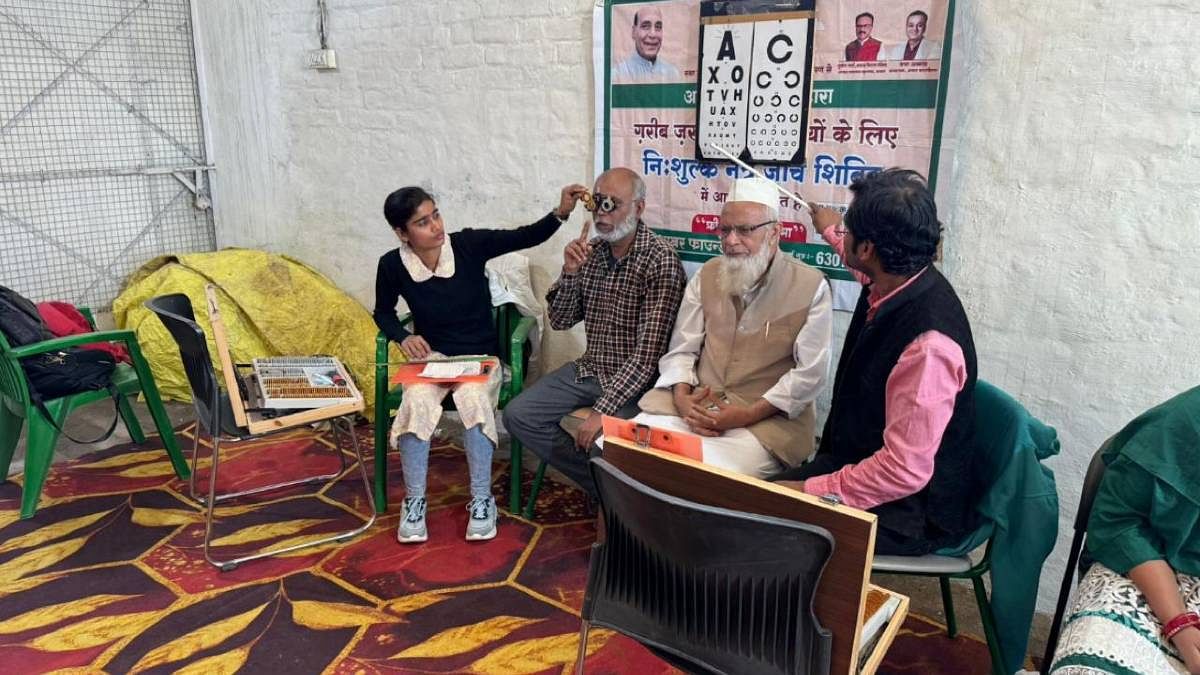
Traditionally, the BJPâs outreach to the Shia community, which is estimated to constitute 15 percent of the around 14 percent Muslim population in India â making the group a minority within a minority â has been predicated on the communityâs religious leadership.
Kalbe Jawad, the eminent Shia cleric from Lucknow, who is widely believed to be the cog around whom Shia politics in the country revolves, has hitherto been the face of this outreach.
Dressed in the flowing traditional black Shia robe and turban, and educated in Islamic studies at a seminary in Qom, Iran in the 1980s, Jawad hails from the family of Ghufran Maâab â the first Shia jurist in India who served in Nawab Asaf-ud-Daulaâs court in Awadh in the late 18th century. For Shias in India, Jawad is like the Pope.
His political appeals to his community to vote for the BJP, therefore, have had as decisive a religious stamp as possible.
In 2011, when (then Gujarat chief minister) Narendra Modi started a three-day fast to ârebuild bridgesâ with Muslims, Jawad had called him the ‘gunehgaar’ (culprit) of the 2002 riots, and said anybody who participated in that fast, including Muslims, would be complicit.
When Modi became prime minister for the first time in 2014, Jawad had said that while the Shias were âscaredâ of Modi, âRajnath Singh had the acceptability of (former prime minister and BJP veteran Atal Bihari) Vajpayeeâ.
Just weeks after Modiâs election, Jawad made a U-turn, saying Modi was âworthy of the communityâs (Shia) respectâ. Ten years into the Modi government, Jawadâs support for the PM is unqualified â only Modi and (Uttar Pradesh CM) Yogi (Adityanath) can uplift the Shias, who must support them, he now says.
Abbas, however, is distinct from the Shia religious leadership, which has been cultivated by the BJP from the late 1990s.
A western suit-sporting entrepreneur, who claims to barely give any attention to sectarian or caste differences among Muslims, Abbas fills the void of the modern Muslim face in politics. He says he can make Muslims vote as thinking citizens, and not as a religious minority.
His voting appeal to the Muslims is threefold: the BJP will be in power anyway, so Muslims should shun their apprehension towards the party; that the fears they have of the BJP are unfounded â the party, he tells them, is not out there to get Muslims; and that the BJP governments, both in UP and at the Centre, have been absolutely indiscriminatory in their welfare schemes, from which the poor Muslims have also benefitted.
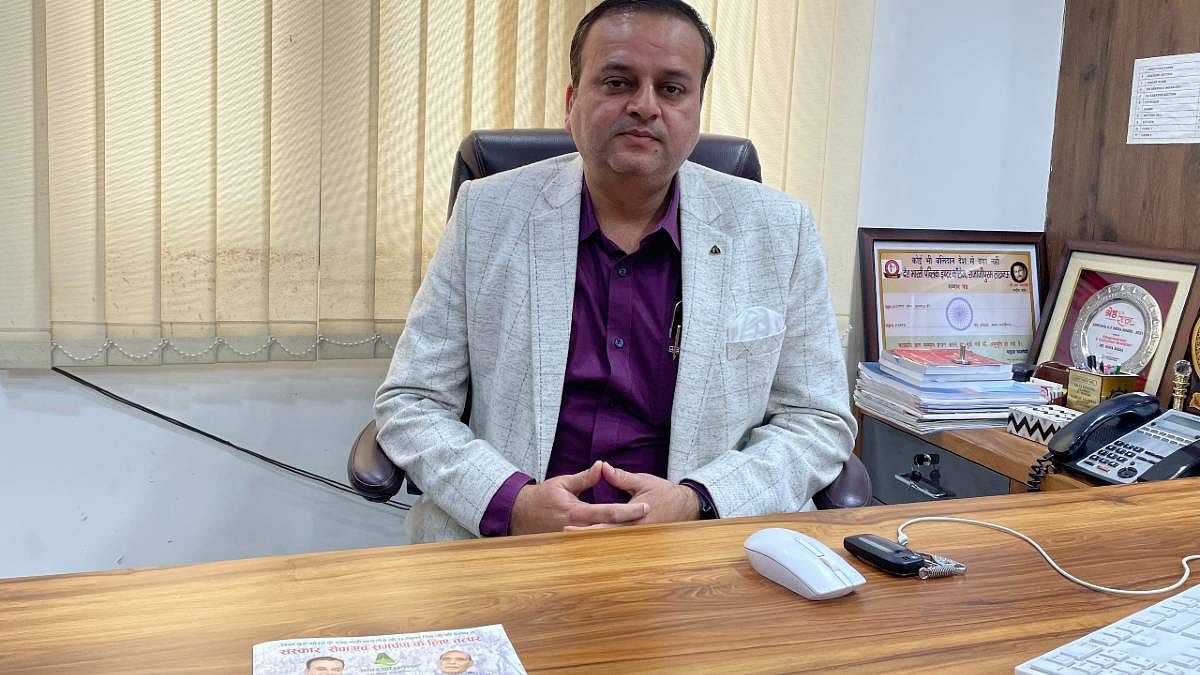
Abbas epitomises the shift from BJPâs own minority-within-minority politics to a new model of welfarist minority politics, where Muslims need to be convinced that while they will certainly not be appeased by the government, they are welcome to be part of its vikas (development) politics.
But at a time when the BJP was rising to national pre-eminence in the 1990s through a fiercely Hindu nationalist campaign, which derided the âminority appeasementâ politics of the Congress, why was the Shia religious leadership coming closer to it? Why have Shias been politically important to the BJP? And as the BJP makes rapid strides towards becoming a national political hegemon, does the numerically insignificant Shia community still matter to it?
Also Read: Khalid Saifullah is hero of hot-button apps. Heâs using tech to âsaveâ Indiaâs Muslims
Fading glory, emerging enmities
Lucknow, which holds a significant place in the historical, political and cultural lives of Indian Muslims, has had the misfortune of having a bloody communal history over the last century, not between Hindus and Muslims, but between Shias and Sunnis. The city has been rocked with deadly riots between the two sects throughout the 20th century.
While the Shia kings (the Shah Nawabs) had ruled Awadh (northeast UP region) from 1722 to 1856, they shared deep fraternal ties with the Sunnis, who served as the highest officials in their courts, argued historian Mushirul Hasan in an essay titled ‘Sectarian in Indian Islam: The Shia-Sunni Divide in the United Provinces’.
Wajid Ali Shah (the last king of Awadh), for instance, Hasan writes, would famously say: âOf my two eyes, one is a Shia and the other is a Sunni.â
The Shia-Sunni schism in Islam emerged back in the year 632 after the death of the Prophet Muhammad. As the faith continued to grow and expand rapidly after the Prophetâs death, a dispute emerged over who should shepherd it.
While those who believed that the leadership should remain in the Prophetâs bloodline came to be known as Shias, an abbreviation of Shiat Ali (followers of Ali, the Prophetâs cousin and son-in-law), others who believed that it should be decided through consensus came to be known as Sunnis.
In India, as Hasan argues, the Nawabs of Awadh remained largely unmoved by Shia-Sunni considerations. However, with the ouster of the Shia Nawabs by the British in the mid-19th century, this relationship began to strain.
Political scientist Kunaal Sharma argues this could possibly be because of two factors. One, despite strong fraternal bonds, the majority Sunni community had largely been excluded from political and economic power in the over hundred-year Shia rule.
Post-1856, however, there was a rise in average Sunni incomes, while the incomes of Shias stagnated or declined. As argued by Sharma, âincome increases within a previously marginalised group can motivate riotsâ.
Two, the late 19th century saw the birth of the Sunni Deobandi and Barelvi revivalist movements, which not only began to theologically codify conservative Islamic practices, but also began to attack Shia beliefs and mourning rituals.
The growth of the printing press allowed their increasingly polemical work to be distributed and consumed more than ever before. Azadari or mourning processions by Shias â commemorating the death of Imam Hussain, a grandson of the Prophet, at the Battle of Karbala in the year 680 â in Lucknow became the playground for deadly violence.
In the 1930s, when Mahatma Gandhi was leading the civil disobedience movement to oust the British from India, another less-remembered âcivil disobedience movementâ was breeding in Lucknow.
Much to the chagrin of the Shias, the newly-organised Sunnis in the city were leading a charged campaign to recite the Madhe Sahaba after Friday prayers. The Madhe Sahaba is a recitation which commemorates all four khalifas of Islam (Abu Bakr, Umar ibn al-Khattab, Uthman ibn Affan and Ali ibn Abi Talib â successors who led the Muslims following the Prophetâs death), instead of just Ali, whom Shias recognise as the only true successor of the Prophet.
Shia groups were enraged. âIn May-June 1937, frenzied mobs in Lucknow and Ghazipur went on a rampage, burning, looting and killing,â writes Hasan. The government in the United Provinces (an area which roughly corresponds to the combined area of present-day UP and Uttarakhand) decided to ban the Madhe Sahaba. This, in turn, enraged the Sunnis. Hussain Ahmad Madani, the-then principal of the Darul Uloom Deoband seminary in UP, advocated civil disobedience.
The Indian National Congress began to bow under pressure from the numerically dominant Sunnis. Increasingly feeling betrayed and having nowhere to go, the Shias began demanding a separate electorate from the Sunnis.
The Congress, which under Jawaharlal Nehru was too occupied by the question of Partition itself, had little time or stamina to effectively engage with the demands of the minority within a minority.
The exception within the party was senior leader Vallabhbhai Patel. But as argued by Hasan, even as Patel threw his weight behind the Shias, including their demands for a separate electorate, he knew he was making promises that neither he nor his party could honour. Yet, he knew that giving an ear to their demands could âweaken the tall claims of (Pakistan founder Muhammad Ali) Jinnah and create a breach in the (Muslim) League campâ.
It was this legacy of Patelâs that the BJP, and before it, its predecessor, the Bharatiya Jana Sangh, would go on to inherit in post-Independence India.
In the lead-up to independence, the Shias, who had been the erstwhile rulers of Awadh, found themselves struggling for any kind of political patronage. The British government did not think they were a political force to reckon with. The Congress was increasingly sympathetic to the Sunnis. And the Muslim League, which was leading the movement for a separate Muslim nation, could ill afford a refutation of its two-nation theory by accommodating Shia concerns.
In search of alliesÂ
In post-independence India, the loyalty of the Shias was up for grabs.
As argued by political scientist Gilles Verniers in an essay in the book ‘Muslims in Indian Cities, Trajectories of Marginalisation’, even after more than a century of political ouster, some prominent Shia families had been able to maintain their lifestyle due to their landholdings. With the abolition of the zamindari system by the Congress government in 1952, their marginalisation became more acute, and their relationship with the Congress, more strained.
âIt is as early as the 1960s that you see some Shia leaders drifting towards the Jana Sangh,â Haider Abbas Rizvi, former state information commissioner in UP, tells ThePrint.
âIn the 1967 election in the state (UP), in Lucknow West (an assembly seat with a sizeable Shia population), Bharatiya Jana Sangh candidate Lalu Sharma had defeated the Congressâ Ali Zahir, who was himself a Shia.â
âFew people know this, but this was because a dummy candidate, Dara Nawab, was supported by Kalbe Abid (Kalbe Jawadâs father), who ended up cutting Zahirâs votes.â It was, as Rizvi says, the beginning of âB Teamâ politics.
Meanwhile, riots between Shias and Sunnis would continue to rock Lucknow. In the aftermath of a particularly deadly riot, the then Janata Party government had banned the Azadari processions in Lucknow in 1977, upsetting the Shia community.
Friendless, the community would have to wait for 21 years for a BJP government to be formed in the state under Kalyan Singh to have the ban on their most important religious processions lifted.
âWe have unnecessarily been branded as anti-Muslim,â an aide to Kalyan Singh reportedly said at the time. âNo other government has ever made an attempt to allow Muslims to take out their religious procession, as we have done. Let Kalyan Singh stay in office for some more time, and Muslims will be convinced that the BJP discriminates against none. Nor does it appease any community.â
This one move won over the hitherto politically-neglected Shias for years to come.
BJP leaders like Atal Bihari Vajpayee, Lalji Tandon, Dinesh Sharma, and most recently Rajnath Singh, who were all embedded in the local politics of Lucknow, as much as national politics, were keenly invested in keeping the religious leadership of the Shias on their side. Lucknowâs parliamentary seat or the Lucknow West assembly constituency, with a sizeable Shia population, came to be âsafe seatsâ for the BJP.
If the Congress had organisations like the Sunni Jamiat Ulama-e-Hind, which was sympathetic to it, or the Shahi Imam of Delhiâs Jama Masjid, who would make appeals for the party, the BJP now had Lucknowâs Shia leadership.
Also Read: Indian Muslims donât need a âMuslimâ leader, but someone who can rise above religious labels
âReal secularismâ vs âpseudo-secularismâ
While Lucknow, often called the nerve-centre of Shia politics, has been at the centre of this BJP-Shia Muslim dalliance, the party has made alliances with Shias in other parts of the country too.
As the chief minister of Gujarat, Narendra Modi, for instance, cultivated close relations with the Dawoodi Bohras â a tiny, affluent sect within the Shia community, hailing mostly from Gujarat and Maharashtra, whose members reportedly held a number of positions in the government.
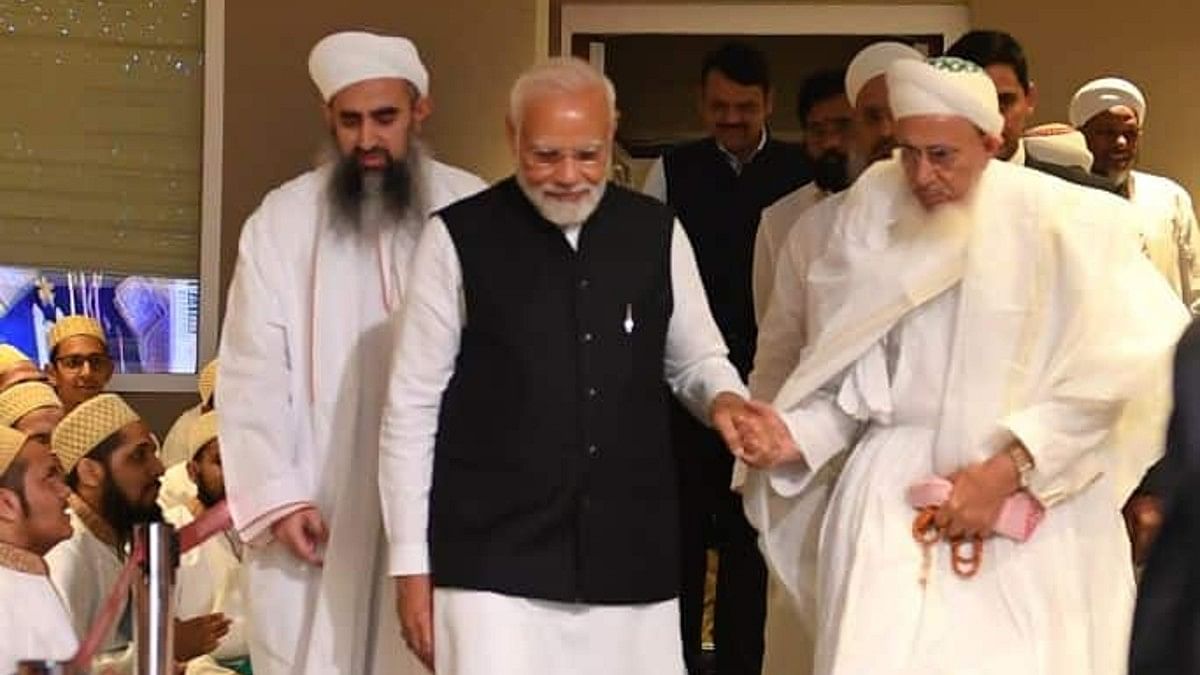
Zafar Sareshwala, a Gujarati Muslim businessman, who was a vocal supporter of Modi at a time when Muslims in the state were extremely disillusioned, for instance, is a Dawoodi Bohra.
At an event of the community held last year in Mumbai, Modi said he had come to the event not as a PM but a âfamily memberâ â underscoring his âfour-generation-oldâ relationship with them.
In 2023, following the abrogation of Article 370 in Jammu and Kashmir, Lieutenant Governor Manoj Sinha did a repeat of what the BJP government had done for the Shias in Lucknow in 1997, by lifting a 33-year-old ban on Muharram processions in the erstwhile state. Sinha would describe the historic procession, in which 25,000 Shias participated, as âa peace dividendâ and âtestimony to normalcyâ.
The relationship, which has had tactical advantages for the Shia community, has long-term narrative-setting value for the BJP. The partyâs proximity with Shia religious leaders would help in demonstrating its âtrulyâ secular credentials as opposed to the âpseudo-secularismâ of the Congress.
For instance, in 2011, Modi held a three-day âSadbhavana Missionâ fast, which saw many members of the Bohra community in traditional attire, in a bid to rebuild bridges with Muslims. It was, incidentally, this fast that Kalbe Jawad had criticised.
In 2014, when Modi had just become PM and still needed to build legitimacy as an international leader and shed his image as a divisive figure, Dawoodi Bohras attended his overseas events in large numbers, including the ones at Madison Square Garden in New York and the Olympic Park address in Sydney.
âShias, by and large, have been a very educated community, and their rulers, the Nawabs, believed in all dharmas,â former UP deputy chief minister Dinesh Sharma, who is known to personally have a lot of goodwill among Shias, told ThePrint.
It is believed in Lucknow circles that Sharma was born after his mother prayed to the third Imam of the Shias.
âHistorically, we never saw Shia kings berate Hindu dharma⦠Wajid Ali Shah made temples, Asaf-ud-Daula held Ramlilas â in that sense, Hindus have always been close to the Shias,â he says. âTherefore, we have had ties with them since the days of the Jana Sangh.â
Thanks to Shia support to the BJP, Sharma, who served as mayor of Lucknow from 2006 to 2017, believes he won up to 25 of 27 wards in Muslim-majority areas.
Also Read: Muslim politics is shifting from religion to reservation. All due to Modiâs Pasmanda outreach
A give-and-give alliance
Over the years, support from the Shia leadership to the BJP under the likes of Vajpayee, Tandon, Sharma and Rajnath Singh has become increasingly formalised and direct.
As argued by political scientist Christophe Jaffrelot and Rizvi, by 2005, Shia leaders like Lucknow cleric Yasoob Abbas were openly supporting Vajpayee, and Mohsin Raza â who would go on to become the only Muslim minister in Yogi Adityanathâs cabinet in 2017 â organised a motorcycle rally in support of Vajpayee when he became the PM.
In the last 10 years, Kalbe Jawadâs support to the BJP has taken the form of open political appeals. In the 2017 UP election, Jawad had asked voters not to vote for the Samajwadi Party, which he said had âcheatedâ Muslims. His cousin, Shamil Shamsi, who runs an organisation called Hussain Tigers, actively campaigned against the ruling SP in 2017.
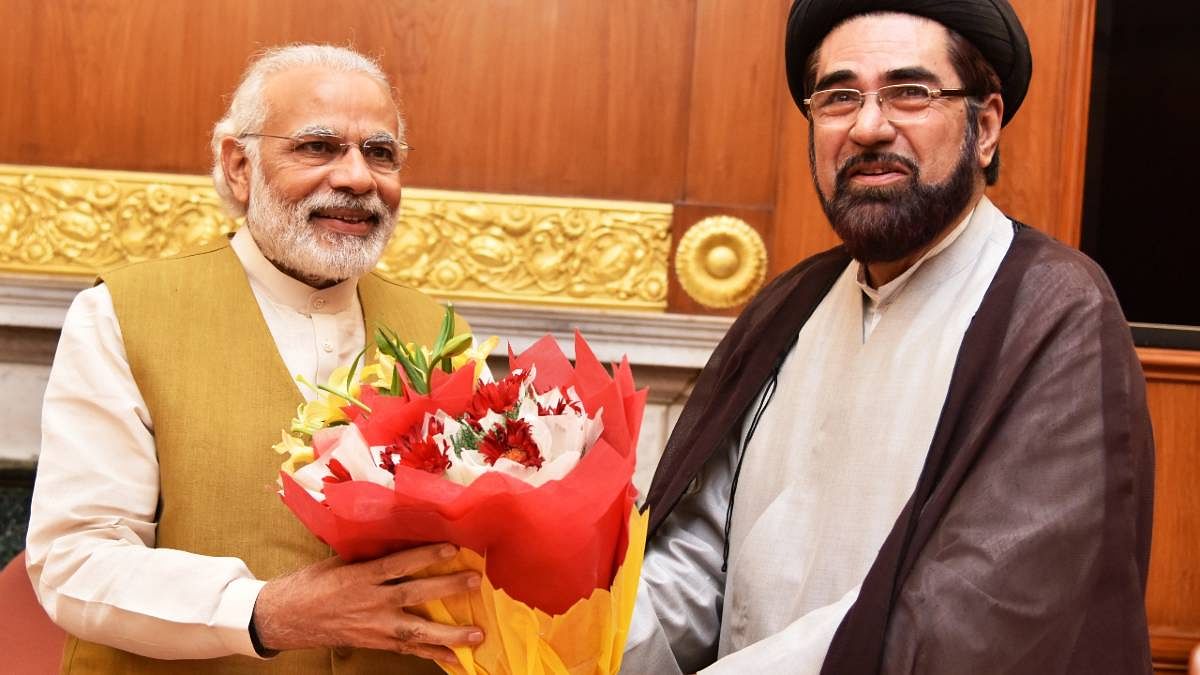
By 2022, Kalbe Jawadâs support for the BJP became even more direct â he went on to thank Yogi Adityanath for helping the community, and said that the community should support ânoble peopleâ who are capable of preventing riots.
In late 2021, his son-in-law Ali Zaidi was elected as the chairman of the Shia Waqf Board in UP. His nephew, Ameel Shamsi, is formally with the BJP.
After the Modi and Yogi Adityanath governments came to power at the Centre and state level, respectively, the rush among the Shia clergy to prove the communityâs closeness to the BJP not just politically, but also ideologically, increased significantly.
In 2017, the All-India Shia Personal Law Board (AISPLB) passed a resolution supporting a ban on cow slaughter. The same year, it passed another resolution asking the central government to enact a law to ban triple talaq. Meanwhile, Shamil Shamsi created the ‘Shia Gau Raksha Dal’, and said that it would work as informers for the police.
Later the same year, came the big surprise. The Shia Waqf Board under Waseem Rizvi, controversial Shia leader who has now become saffron-clad Jitendra Narayan Singh Tyagi after embracing Sanatan Dharma in 2021, gave an affidavit in the Supreme Court saying that the disputed site of the Babri Masjid in Ayodhya should be given to the Hindus.
Smoke & mirrors
To be sure, there are factions within the small Shia leadership too â they are no monolith. Waseem Rizvi, for instance, has been an arch-rival of the Kalbe family for several years now.
Yet, over the years, as the visible faces within the community have sought to align themselves with the BJP, often for differing individual interests, it has become an unexamined truism in politics that Shias, as a community, support the BJP.
But the narrative is largely smoke and mirrors.
âIt has only been the religious leadership of the Shias which has supported the BJP⦠And that too, not the entire leadership,â political scientist Hilal Ahmed told ThePrint. âOur surveys have repeatedly shown that the BJP gets the same 8-9 percent vote from Shias as it gets from the rest of the Muslim community â so this narrative that the Shias support the BJP is ill-founded.â
Lucknow-based Urdu journalist Husain Afsar agrees. âThere were some BJP leaders like Vajpayee, Lalji Tandon, Dinesh Sharma, and even Rajnath Singh, who had close relationships with the Shia dharma gurus here,â he says. âBut those were individual relationships, and the BJPâs appeal was restricted to the leaders â it is not what is always said that Shias as a group support the party.â
In his essay on the Shia Muslims of Lucknow, Verniers makes the same argument.
âThe electoral behaviour of Muslims in Lucknow, and of Shias in particular, is not easy to discern,â he writes. âOne element that has emerged from the various fieldworks conducted in Lucknow in recent years is that the ânaturalâ leadership of the communities (Shia and Sunni) â their religious leaders â has little impact on their electoral behaviour.â
A credibility crisis
There is also a looming crisis of the credibility of the clergy.
âNobody likes their religious leadership to align themselves so openly with political parties. There has always been a sacred line between dharma and siyasat (politics), which the clergy openly flouts by appealing for political parties,â Afsar says.
In 2020, for instance, when Kalbe Jawad visited Kashmir days after a meeting with Union Home Minister Amit Shah, he was fiercely opposed by Shia leaders within Jammu and Kashmir, who accused him of doing the âBJPâs biddingâ in the state.
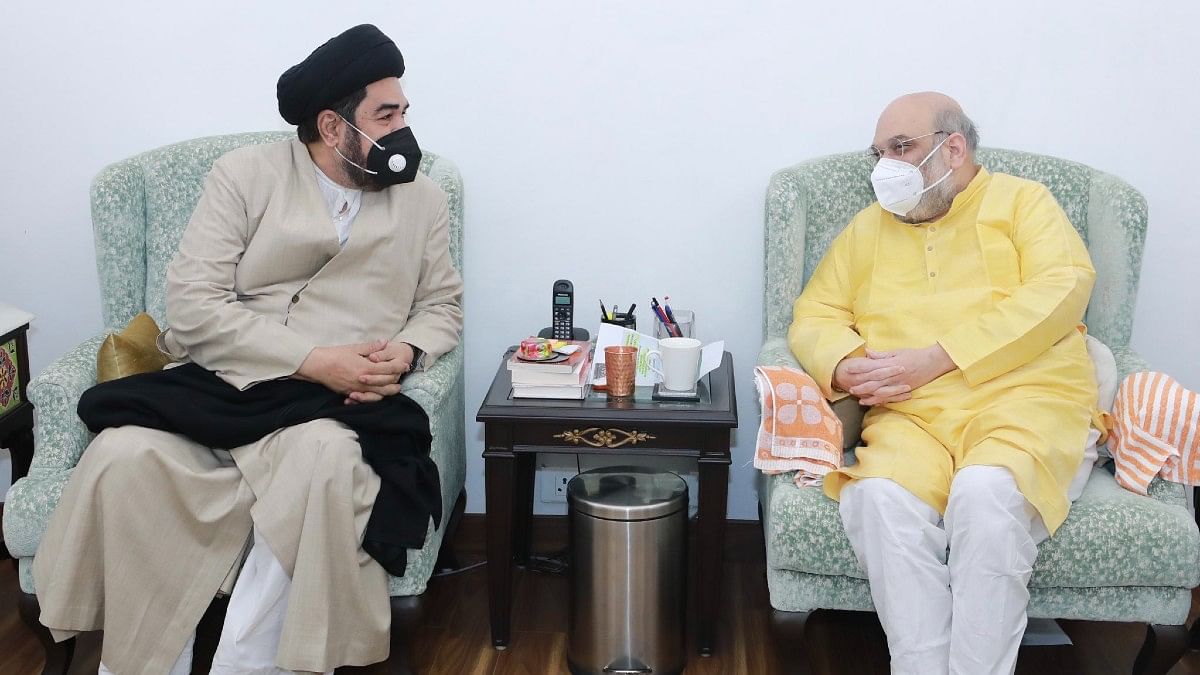
The fact that the Shia clergy has remained obsequious to the BJP leadership despite the âintense hatred campaignsâ against all Muslims has further diminished their credibility, Afsar argues.
âBe it anti-CAA (Citizenship Amendment Act) protests, demolition of Muslim houses, campaigns against masjids â the clergy remains tight-lipped. It does not bother to speak for its own people.â
Unlike the previous BJP leadership with Vajpayee or Singh at the helm, the new BJP leadership in Uttar Pradesh makes less of a distinction between âgoodâ and âbadâ Muslims â at least rhetorically.
During the 2019 campaign for the Lok Sabha election, CM Adityanath had said at a poll rally that if the opposition had âfaith in Aliâ, then the âBJP had faith in Bajrang Baliâ.
The statement created a stir within the Shia community, who are believers of Ali, with several clerics prodding Rajnath Singh to make Adityanath retract the statement.
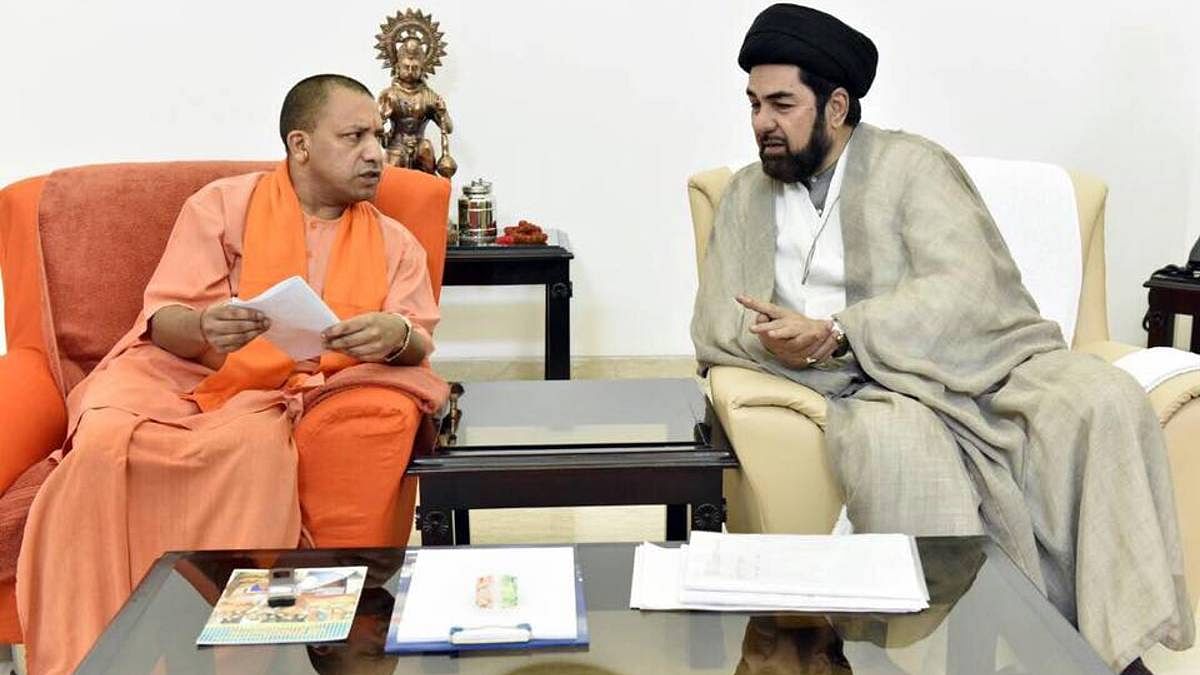
When Covid struck in 2020, the BJP government in UP put a ban on Muharram processions. The ban on the ground of an unprecedented health crisis was acceptable to most Shias. But what was not was the circular issued by the police to implement the ban, which reportedly suggested that the processions may involve cow slaughter, sexual assault and other acts requiring surveillance.
âIn this context, the continued support of leaders like Kalbe Jawad to the BJP has created a sense of abandonment within the community,â a prominent Shia writer from the city told ThePrint. âYou can keep supporting them, but somewhere you have to ask, what are they doing for the community?â
Jawadâs cousin Shamil Shamsi, however, argues that âa lotâ has been done by the BJP government for the Shia community, unlike the âsecular governmentsâ which always discriminated against them to appease the Sunnis.
This year, the government is considering giving some sort of benefits to the Bunkar community within the Shias, who have traditionally been zardozi weavers but have been extremely economically and socially backward, Shamsi told ThePrint, adding that âwe are also persuading the government to give the Bada Imambara in Lucknow the status of a dharmic site like the Golden Templeâ.
But for several Shia leaders in the city, these are just political breadcrumbs.
The Shia religious leadership has pushed itself into a corner, where it has to contend with crumbs, says Rizvi, the political analyst. âThe relationship (between Shia clerics and the BJP) started out of inferiority in terms of numbers and insecurity, but has now become a compulsion for them⦠They will go with the BJP even if the masses donât follow them.â
From Shias to PasmandasÂ
Even as it continues to humour them, the BJP may be aware of the increasing redundancy of the Shia clergyâs support to it, too.
âDuring Covid, I was told by someone high up in the establishment that the BJP no longer needs Shias on the front now. Months later, the partyâs outreach to the Pasmandas began,â says the Shia writer mentioned earlier.
Muslims are broadly divided into three caste-like classes â Ashrafs, who are like the Brahmins; Ajlafs, the backwards, and Arzals, the Dalits. The Ajlaf and Arzal Muslims, who make up 85 percent of the Muslim population, constitute the Pasmanda community.
âAfter the Prime Minister talked about the Pasmanda outreach, we did a bit of an analysis, and realised that while almost 4 crore Muslims in UP have benefitted from various government schemes, very few of them support the BJP,â says a BJP leader from the state, not willing to be named. âThis has to be changed, and it has to be done through targeted outreach.â
According to a spokesperson of the BJPâs Minority Morcha, the party aims to expand its voter base among Muslims from the existing 9 percent to 16-17 percent in the upcoming Lok Sabha polls. The outreach to Pasmandas is crucial for this expansion.
But it is also crucial for ideological reasons for the BJP and its parent outfit Rashtriya Swayamsevak Sangh, as most Pasmandas are believed to have been lower-caste Hindus who converted to Islam due to untouchability and exploitation.
The BJP has slowly been cultivating Pasmanda leaders. Its Minority Morcha national president Jamal Siddiqui, for instance, is a Pasmanda. Danish Azad Ansari â currently the only Muslim minister in Adityanathâs cabinet â too is a Pasmanda.
In 2023, Tariq Mansoor, former vice-chancellor of Aligarh Muslim University and another Pasmanda leader, resigned from his varsity post when he was nominated by the BJP as a Member of the Legislative Council in UP. He is also now a vice-president in the BJPâs national executive.
Iftikhar Ahmed Javed, chairman of UP Board of Madrasa Education, and Chaudhary Kaif-ul-Wara, chairman of Uttar Pradesh Urdu Akademi, are also from the Pasmanda community.
While it was the numerically insignificant Shias who have historically played the role of the âGood Muslimâ for the BJP, it is now the poor, backward, and numerically powerful Pasmandas, Hilal Ahmed says.
The Hindutva configuration â with Modi as the biggest glue factor â works on a three-pillar framework, the political scientist explains. These are core Hindutva, the narrative of inclusivity, evident in Sabka Saath Sabka Vikas, and welfare schemes. While the three can often be contradictory, the last two are extremely important for the BJP to keep winning the support outside its committed voter base, he explains.
The subtle shift from the BJPâs reliance on the Shia clergy to an entrepreneur like Abbas, whose politics is predicated on welfare for all poor Muslims and not just the Shias, perhaps reflects this strategy to blend the narrative of inclusivity with welfarism.
(Edited by Nida Fatima Siddiqui)
Also Read: The traditional BJP voter is upper caste, upper class & a staunch believer in Hindu pride

